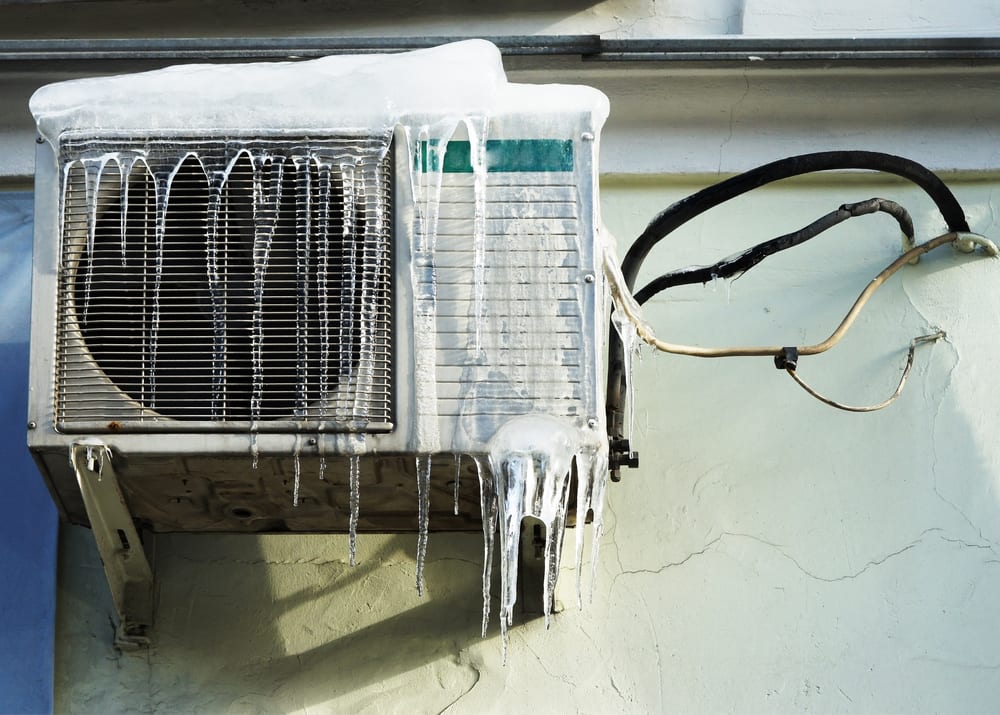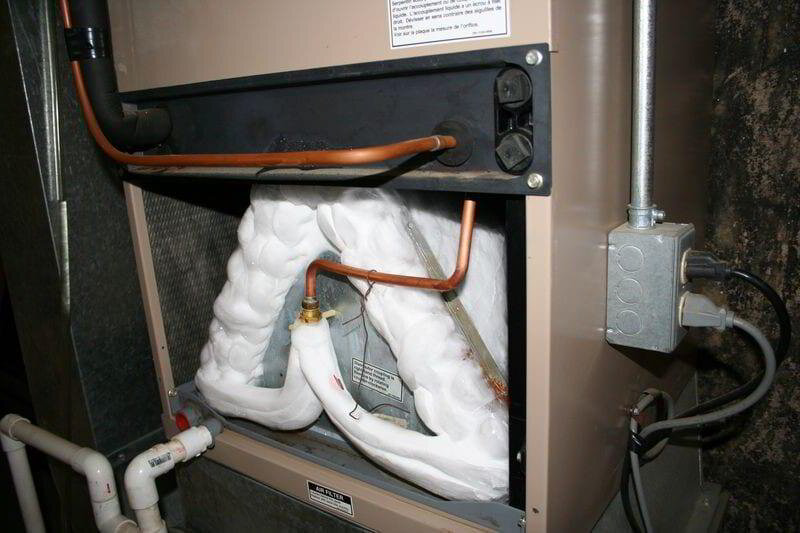What to Do When Your AC Pipe Gets Frozen: Complete Manual
What to Do When Your AC Pipe Gets Frozen: Complete Manual
Blog Article
Everyone seems to have their own individual conception about What Do I Do If My AC Pipe Is Frozen.

Intro
Discovering that your AC pipe is frozen can be worrying, particularly throughout hot summertime when you rely upon your a/c one of the most. Comprehending what to do in such a scenario is essential to stop more damages to your cooling system and guarantee your comfort indoors.
Comprehending the Causes
Several variables can contribute to the freezing of an air conditioning pipe. Recognizing these causes can help you resolve the issue properly.
Lack of Airflow
One typical cause of a frozen AC pipe is inadequate air flow. When the air movement over the evaporator coil is limited, it can trigger the coil to drop below freezing temperature, leading to ice development on the pipe.
Reduced Refrigerant Levels
Not enough cooling agent degrees in your air conditioning system can additionally result in a frozen pipe. Reduced cooling agent degrees can create the pressure in the system to drop, leading to the freezing of moisture on the evaporator coil.
Cold Weather Conditions
In chillier environments, freezing temperatures outside can contribute to the freezing of air conditioning pipes. If your a/c system is not correctly protected or if there are leakages in the ductwork, chilly air can penetrate the system, creating the pipe to freeze.
Dirty Air Filters
Filthy or stopped up air filters can restrict air flow in your air conditioning system, bring about different concerns, including an icy pipeline. It's essential to replace or clean your air filterings system regularly to ensure proper air flow and avoid ice build-up.
Signs of a Frozen Air Conditioner Pipe
Recognizing the signs of an icy air conditioner pipe is crucial for prompt action.
Minimized Airflow
If you observe a significant decline in airflow from your vents, it could indicate a frozen pipeline.
Ice Buildup on the Pipe
Visible ice buildup on the refrigerant line or the evaporator coil is a clear indication of an icy air conditioning pipe.
Weird Sounds from the Unit
Unusual noises, such as hissing or bubbling, coming from your air conditioner system can indicate that there's ice existing on the pipe.
Immediate Actions to Take
When faced with a frozen air conditioning pipeline, it's essential to act quickly to stop further damage to your cooling system.
Turning off the AC
The very first step is to turn off your ac system to avoid the system from running and exacerbating the concern.
Looking for Blockages
Evaluate the area around the indoor unit for any obstructions that may be obstructing air flow, such as furnishings or curtains.
Defrosting the Pipe
You can use gentle approaches like placing towels soaked in warm water around the frozen pipeline to help thaw it gradually.
Safety nets
Taking preventive measures can help prevent future events of an icy air conditioner pipe.
When DIY Methods Fail
If your attempts to thaw the pipe or address other issues are not successful, it's time to call a specialist.
Value of Hiring a Professional HVAC Technician
A certified HVAC professional has the competence and tools necessary to detect and fix concerns with your AC system securely and effectively.
Normal Maintenance Checks
Set up routine maintenance get in touch with a specialist HVAC service technician to make certain that your air conditioning system is running efficiently.
Altering Air Filters
Frequently change or cleanse your air filters to avoid airflow constraints and keep optimal efficiency.
Protecting Exposed Pipes
If your AC pipes are subjected to cool temperature levels, think about protecting them to prevent freezing during cold weather.
Seeking Professional Help
If DIY techniques stop working to resolve the issue or if you're unsure regarding just how to continue, it's ideal to seek support from a qualified HVAC technician.
Final thought
Taking care of a frozen air conditioner pipeline can be an aggravating experience, but knowing exactly how to react can assist reduce damage and restore convenience to your home. By recognizing the reasons, identifying the indicators, and taking punctual activity, you can efficiently resolve the issue and protect against future occurrences.
Frozen AC Line: Why It Happens & What To Do About It
A frozen AC line can be a rather peculiar sight in a place like Phoenix, Arizona where nothing ever freezes. In this post, we’ll discuss what makes an air conditioner line frozen – and what you can do about it.
Dirty Air Filters
Did you know that you should be cleaning or replacing your air filters on a monthly basis? Failing to do this can result in airflow issues that, in turn, cause your evaporator coils and lines to freeze over. You’ll notice a buildup of ice on both components, although the buildup on your pipes will, of course, be more evident unless you open your air condition up to reveal the coils.
What To Do About It
Give your air filter a good cleaning if it’s reusable. If not, replace the filter outright. Next, switch your air conditioner’s fan setting on and leave it there for 2-3 hours. This will draw warm air in, helping to thaw your evaporator coil. You can also check out this article for some tips on cleaning the coils themselves if you’d like to speed the process up. Before you switch the unit back to its normal state, make sure the supply vents are completely unobstructed and free of dust or other debris.
If you keep having this issue even after replacing your filters regularly, contact a local HVAC repair company and have them inspect your evaporator coil, ductwork, and any other components that may be at fault. If you live in the Phoenix, Arizona area, give American Home Water and Air a call.
Low Refrigerant Levels/Leakage
What To Do About It
Contrary to what air conditioner “recharge” companies often tell their clients about refrigerant, it should never need to be simply refilled. You see, refrigerant runs in what experts refer to as a “closed loop.” Refrigerant really shouldn’t be leaving that loop. If it is, you’ve got a leak.
Paying someone to come and pump more refrigerant into your system (aka “recharge” it) isn’t the solution. Doing that will simply kick the can down the road. Besides, refrigerant leaks can be harmful to the environment and people in your home.
Rather, you need to take care of the leak with the help of a technician. Check out this article for some more information about dealing with air conditioners that are leaking refrigerant. Before you contact a technician, switch your thermostat to the off position. Then, switch the fan setting on and let it run for 2-3 hours so the unit can thaw.
Improper Temperature Setting
Improper temperature settings can also cause a drop in your air conditioner’s pressure. What many people don’t realize is that air conditioners are actually designed to run when temperatures have fallen above roughly 60 degrees Fahrenheit. If you run the unit when it’s cold outside, you’ll run into many issues, including frozen components.

As a serious reader about What Do I Do If My AC Pipe Is Frozen, I imagined sharing that excerpt was beneficial. Sharing is nice. You won't know, you may just be doing someone a favor. Kudos for your time. Come back soon.
Request Service Report this page